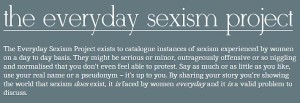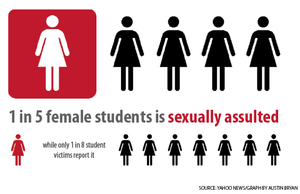[1] The title focuses the readers attention very will. The lede was thought provoking and forced the reader to continue reading to find out the answer for themselves. Yes, it asks the reader to think about how girls are constantly taken out of the classroom for something as silly as clothing and how this has directly effected society as a whole and acceptance.
[2] The introductory section of the article invites the reader in really well. It forces the reader to not only look at the positive things schools teach our children but also the underlying negative things that are being taught without our full knowledge. It looks at how dress codes are often ‘sugar coated’ by schools in order to look like a positive thing. However, the more cases and scenarios you look at, the more the reader can see just how much of a problem dress codes are and how they directly influence sexism and rape culture.
[3] The writer offers up a strong idea and proof throughout the article. I show multiple scenarios where girls are being overly sexualized as well as multiple instances where schools blatantly say that boys education are more valued than a girls. I think the case that refers to the transgender community might not have been immediately obvious to readers and solidifies the point that it really is for the benefit of a boys education rather than helping girls.
[4] The writer shows clarity of thought really well. Everything within the article is organized around a central theme to prove a point. It’s also presented in such a way that the examples are used to make the biggest point as well as a statistic.
[5] The writer does this really well by acknowledging both sides of the argument. For example, I talked about how schools claim that the point of dress codes are to create a distraction free learning environment, but then I show multiple examples where schools are more focused on boys learning than girls. I organized material really well, first summarizing the topic, then picking out multiple examples and talking about organizations that are in agreement with this movement as well as looking at other groups that are directly effected in order to avoid over generalizations.
[6] I used over 12 sources in order to fully research this controversy. I developed a persuasive stance by using so many examples where women are directly being targeted by sexist school dress codes. I utilized my research by using accurate statistics to make my point as well as the many examples I was able to find.
[7] I exceeded research expectations and assignment requirements. I used 11 secondary sources, 5 visual sources, as well as a primary research site.
[8] I integrated secondary sources effectively by summarizing them as well as using pictures in order to make the topic more relatedly and deepen the analysis. The primary sources was used to find statistics as well as more information and background on rape culture and sexual assault, which is mentioned throughout the article as my main argument.
[9] I persuaded the audience to consider my claims by using so many examples as well as citing multiple agencies that are trying to fight for my main argument which is rape culture and sexism. I think my use of rhetorical tools was strong. I was able to pull on emotions by talking about sexual assault and the numbers surrounding it’s victims as well as logic by looking at examples to prove my point.
[10] I think the visuals I selected were appropriate as well as revealing. All of the visuals used were of the victims to pull on the readers emotions and logic as well as photos showing the large support by outside organizations. I also used a visual with the statistics surrounding sexual assault. I placed the visual strategicially to line up with each story so that the reader could easily make a connection between the visual and the evidence. Yes the visuals contribute in a meaningful way, without them I don’t think the reader would feel as invested in the topic.
[11] I don’t think I did this very well since I was not in class in order to get in peer editing or teacher comments. However, I did reach out to multiple friends and family in order to get feedback to make sure my article was well written.
[12] I used hyperlinks effectively. They were always appropriate, often used to cite a source in case a reader wanted more information on the topic or story I was referring to. I believe it gave me more credibility.
[13] I went through my article several times as well as had family and friends look over it to check for grammar and appropriate style. I believe that my sentence issues being credibility on the issues by using hyperlinks as well as simple summarizations.




